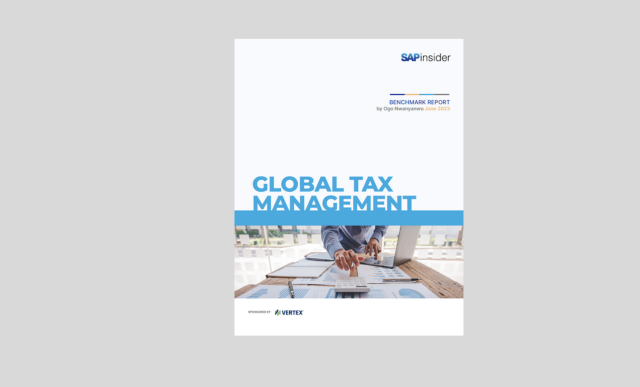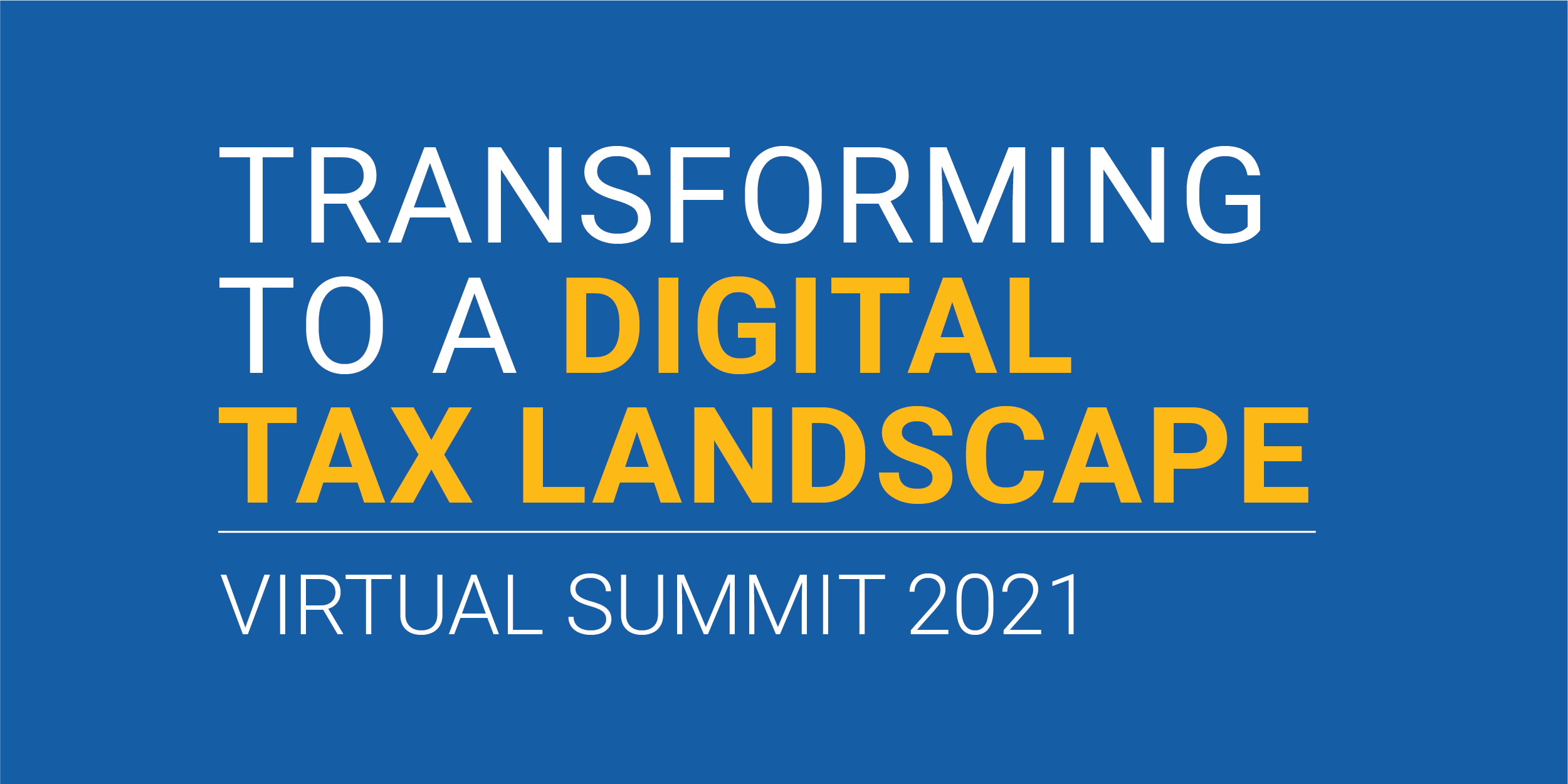Moving Your Tax Engine to the Cloud: A Revenue Generating Opportunity?
by Brianna Shipley, Senior Editor, SAPinsider
Regardless of where companies are in their digitization journey, every business currently running SAP ERP Central Component (SAP ECC) must decide whether and when to migrate to SAP S/4HANA before mainstream maintenance ends in 2027 (or in 2030 with extended maintenance). According to SAPinsider research published in June 2020, a vast majority of survey respondents — 80% — expect to see financial benefits through improved productivity as a result of their transition to SAP S/4HANA, with 69% expecting financial benefits through increased efficiency.
These expectations speak to the revenue-generating potential of SAP S/4HANA, making it no surprise that a majority of survey respondents signaled some type of move to the solution — whether they had completed a deployment, were in the process of implementing, or were running a proof of concept (PoC) or an evaluation of the software.
Explore related questions
In addition to increased productivity and efficiency, an SAP S/4HANA project provides SAP customers with another revenue-generating opportunity that is often overlooked: the chance to move their on-premise tax engine to the cloud. While tax is traditionally viewed as a compliance-driven function rather than a revenue-generating one, according to Tim Roden, Solution Principal, Sales and Use Tax at Sovos, many SAP customers experience the latter when they move their tax engine to the cloud.
Roden has observed that the intangible benefits of such a move can be difficult to measure, making it a challenge to bring the expensive project plan to leadership.
However, “migrating an on-premise tax engine as part of a move to SAP S/4HANA is really just migrating a bunch of old processes and custom code,” Roden says. “It’s going to slow down the migration and result in more regression testing.”
In other words, companies should be feeling a sense of urgency to look at their processes and the total cost of ownership (TCO) associated with their on-premise tax engine before moving to SAP S/4HANA. “Companies should consider the cost and time savings of moving their tax engine to the cloud first, before beginning an SAP S/4HANA migration project,” Roden says.
Roden’s advice calls upon two different sides of the brain: imagination and practicality.
Reimagining Resource Allocation to Increase Earning Potential
The antiquated view that the tax department serves a single purpose — regulatory compliance — ignores its potential for agility. According to Roden, when tax professionals are freed of the manual responsibilities required to maintain an on-premise system because those tasks are now automated by a cloud-based system, the financial benefits of moving to the cloud become more tangible.
“In addition to increasing accuracy and compliance, removing change management complications, improving visibility, and reducing audit risk, moving your tax engine to the cloud can also produce revenue-generating results,” he says. “The time spent by employees supporting an on-premise tax engine can now be reallocated to larger projects.”
For example, Roden recently worked with a company that wanted to invest in a new procure-to-pay system. However, with the company’s IT group spending half of its time supporting an on-premise tax engine — troubleshooting, performing maintenance and content updates, and monitoring the system — the organization lacked the resources to roll out the new procure-to-pay system, so the project was put on hold. After migrating its tax engine to the cloud, however, the company was able to reallocate IT resources to the procure-to-pay project.
“The project is now helping the organization automate its accounts payable process, allowing it to take advantage of prompt payment discounts and ensure that purchase transactions are done accurately,” Roden says. “As a result, the company is experiencing additional monetary benefits — and it was able to implement the system responsible for the benefits because it freed up IT resources by moving the tax engine to the cloud.”
According to Roden, the major benefits associated with moving the tax engine to the cloud include the following.
Benefit#1: Increased Accuracy Rate
Factors such as where a product is being sold (or in the case of e-commerce and streaming services, where it is being purchased or consumed); what is being sold; and who it is being sold to (i.e., consumer, supplier, business, etc.) create “a complex web for how tax needs to be assessed,” says Roden. While on-premise tax engines can determine transactional tax, they cannot apply updates in real time, so updates must be made manually, which requires additional effort and creates accuracy challenges. In addition, changing jurisdictions adds another layer to the accuracy challenge, with more than 15,000 different taxing jurisdictions in the US to date. Cloud-based tax engines can address these intricacies with the click of a button.
Imagine a jurisdiction changes its tax rates or modifies how it will tax a product or service.
“Sometimes this happens without a lot of warning, meaning there may be a lag in updating tax jurisdiction codes (TJC) within the SAP system if that needs to be done manually, causing a disruption in the interaction between your on-premise tax engine and your SAP master data,” says Roden.
One way that Sovos helps SAP customers solve this challenge is with the company’s cloud-based global tax determination engine, which is hosted on the SAP App Center.
“Sovos has a team of regulatory analysts who work with the different departments of revenue to ensure the latest content is available in the tax engine, and the system is capable of integrating with multiple source systems — including integrating with SAP systems in a certified way — at the same time, resulting in the same consistent tax results regardless of which channel the client is using,” says Roden.
Benefit #2: Simplified Change Management
Applying the necessary content updates to a tax engine can be manageable if there is a process built around it, says Roden, and tax departments that are proactive about creating that process are the most successful. But what if that process — which can require several time-consuming steps and may need to be completed during off hours for off-cycle updates — could be removed? In other words, is it enough to be “manageable”?
“Change management is already challenging by nature, but those operating on-premise systems have to deal with it manually, which opens up opportunities for error. Even when a process is built, it is continually subject to adjustments,” says Roden.
As a result of the pandemic, for example, grocery stores were advised to avoid reusable bags for a time. In jurisdictions that typically apply a bag fee, such as Massachusetts, the fee was eliminated while the order was in place. When that change was enacted into law, many companies had to update their tax engines off cycle, which meant getting approval for an emergency install.
“Applying predictable, monthly content updates is one thing, but content updates that need to be applied off cycle require a different process,” says Roden. “If it’s an on premise tax engine that integrates with an organization’s SAP system — which for most SAP customers is the lifeblood and system of record of their business — non-production installs and testing are usually required to eliminate any chance of negative effects on the system. In contrast, those changes are managed automatically for those that have moved their tax engine to the cloud.”
Benefit #3: Improved Centralization and Visibility
Running a tax engine in the cloud increases a business user’s accessibility and visibility into how the engine is applying tax, and provides robust reporting and a rich view into the organization’s indirect tax liability and all of its transactions, which ultimately helps a company file its returns correctly, says Roden.
“You might be surprised at how many tax professionals don’t know what their tax engine looks like because they don’t have the access level to go in and make modifications or perform overrides. This ends up being the biggest challenge that our clients face when it comes to running an on-premise tax engine — a lack of visibility into how the engine is making decisions,” says Roden. “Cloud-based tax engines provide business users with more flexibility for writing tax decision rules and creating workflows that incorporate all of the information that’s coming across from the SAP system.”
Moving to a cloud-based tax engine also provides a deeper level of granularity that can help organizations perform reconciliations when preparing for filing. This capability is important because as indirect taxes are determined on transactions within the SAP system, the tax that is collected is typically written to a specific general ledger (G/L) account for tax, and then companies file the information from that account with the specific jurisdictions requiring that tax. According to Roden, companies sometimes struggle to get clarity from the on-premise tax engine or the SAP system itself about which jurisdictions they actually owe. To add another layer of complexity, once the amounts are earmarked in the G/L accounts, some states require individual submissions at multiple levels, such as the county, state, and city level.
“Sometimes the SAP system and the on-premise tax engines just don’t have that level of granularity to break out the amount of indirect tax collected that is due in those jurisdictions, which can make it challenging to do reconciliations in preparation for filing,” he says.
Another situation where having visibility into the tax engine becomes significant is in cases where sales tax exemption certificates apply. One such scenario can occur for SAP customers in the manufacturing or distribution space. Products are sold along a chain from business to reseller, reseller to retailer, and retailer to customer, and those sales may fall under a tax exemption, according to Roden.
“As part of that sale, our clients that use SAP software may not be liable for charging tax on those transactions due to the type of business the buyer is and how the buyer is using those goods,” he says. “To protect themselves from audit risk, our clients need to make sure they are collecting a tax exemption certificate from their buyers.”
The cloud-based global tax determination engine from Sovos includes a certificate management solution that helps companies collect and track sales tax exemption certificates. This level of visibility ensures that invoices are created correctly within the SAP system, that the tax obligation is set correctly within the engine, and that they have the document on file.
“That is one of the first checks that auditors will make — a list of all the exempt sales and the exemptions to support them,” says Roden. “It’s more than just a determination engine. It’s really a complete indirect tax compliance solution that helps our clients with their SAP systems and their additional systems.”
Building the Business Case
According to Roden, today’s cloud providers and technology have transcended customers’ initial hesitancy around moving to the cloud caused by concerns about performance and security.
“Cloud providers are under such intense scrutiny that it makes more sense for organizations to leverage a cloud provider,” he says. “We are in the business of security and data privacy, while a typical organization’s core business — such as manufacturing, for example — likely isn’t considering data privacy laws, server security, or changing regulations on a daily basis. A lot of organizations look to cloud providers like Sovos to address additional security concerns because they know that’s our core competency.”
This type of move is still significant, however, and will require buy-in from leadership. Roden recommends including three points in your business case for moving the tax engine to the cloud.
#1 The TCO of an on-premise tax engine
To understand the TCO associated with running and maintaining the system you currently have in place, consider everything from the cost of the system itself, to the specific server that the engine is running on, to the staff required to support the system. You can deduct those expenses from the cost of moving to the cloud, and if the move no longer requires staff to spend time supporting the system, consider how those employees could be reallocated to revenue generating projects and high-value tasks.
#2 The cost of inaccuracy
Although more difficult to calculate in a tangible way when compared to the TCO associated with an on-premise tax engine, understanding the repercussions of inaccuracy is an important point to include in a business case for moving the tax engine to the cloud “because inaccuracy can lead to potential challenges with an audit,” says Roden. If a company under-collects sales tax, for example, they are subject to penalties and interest associated with that cost.
On the flip side, if a company overcharges sales tax, it opens up the business to potential challenges with its customer base. “In some cases, we’ve seen this latter scenario lead to class action lawsuits where groups of customers that have been overcharged tax initiate a suit against the organization,” says Roden. “By having your tax engine in the cloud, you can greatly reduce the risk of inaccuracies, ensuring your system is updated automatically and in real time.”
#3 The time saved by streamlining audits
In addition to looking at cost savings associated with reducing the risk of negative audit results, a business case should also consider how the company can benefit from time saved by having the information it needs to streamline the audit process. “Audits shouldn’t be something to fear if you have confidence in how you are applying and assessing indirect tax,” says Roden. “There is still time spent answering questions, running queries, and providing documentation to support that audit. With the reporting that’s available in cloud-based tax engines, providing this information becomes more of a business-level activity and doesn’t necessarily require that an SAP resource get involved.”
Seize the Opportunity
An SAP S/4HANA migration project brings with it the potential to realize significant financial benefits — through more obvious avenues, such as increased productivity and efficiency, and also via less obvious ones, such as the opportunity to move your tax engine to the cloud. By building the right business case to seize this often overlooked opportunity, and taking advantage of the automation a cloud-based tax engine provides to free up your resources for revenue-generating tasks, your organization can gain a competitive edge that could make all the difference. To learn more about the challenges of an on-premise tax engine, read this blog.






